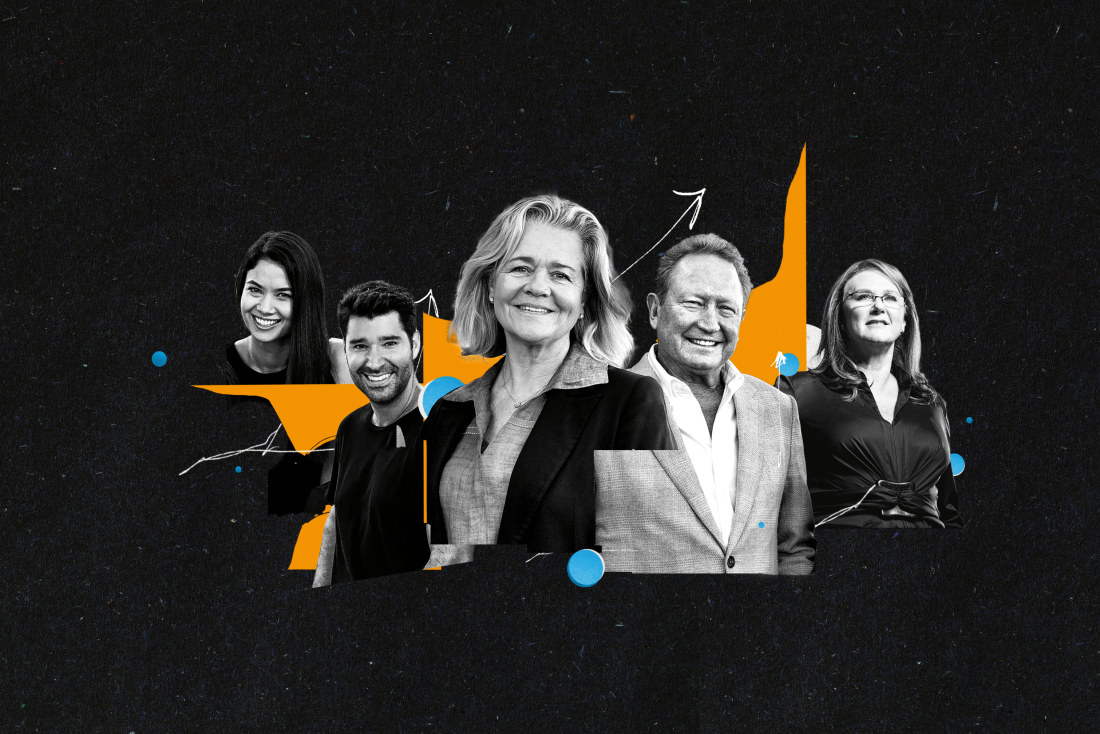Philanthropy 50: Which Australians gave away the most in 2023?
Donations from Australia’s biggest private givers have jumped to a record $1.25 billion. From the upcoming May issue out on April 26.
Australia’s three biggest philanthropic foundations gave out $585 million last year, making up almost half of total spending by the top 50 givers.
Andrew and Nicola Forrest’s Minderoo Foundation placed at No. 1 on the Financial Review Philanthropy 50 list for the first time, spending $225 million. Minderoo was followed by Yajilarra Trust, established by MYOB founder Craig Winkler and his wife, Di, and the Paul Ramsay Foundation, which was set up after the billionaire died in 2014.
Overall spending by the country’s high-net-worth givers jumped 12 per cent to a record $1.25 billion in the 12 months to June 30, outpacing spending by companies and the mass market.

For five of the past six years, the Philanthropy 50 list has grown at a faster rate than the Financial Review Rich List. Sam Bennett
“The big end is really marching along very solidly,” says John McLeod, senior research consultant at JBWere Philanthropic Services, who has been compiling the list for The Australian Financial Review Magazine since 2017.
The Forrests overhauled Minderoo last year, injecting $5 billion worth of Fortescue shares. After acknowledging it had targeted too many causes, the foundation said it would put more emphasis on Australia and the Asia Pacific and focus on three key areas: helping vulnerable communities, promoting gender equality and protecting oceans.
In the lead-up to the Voice referendum, the Paul Ramsay Foundation was the biggest donor to Australians for Indigenous Constitutional Recognition, giving just over $7 million to the charity behind the Yes23 campaign. The Yajilarra Trust donated $4.5 million to the University of NSW’s philanthropic unit, which has had a long association with the Voice through its Indigenous Law Centre.
“Donations to support the Yes campaign for the Voice referendum were generally made with a view to advancing the lives of Indigenous Australians and so are considered a social issue, fitting under charitable causes,” says McLeod, adding this was different to supporting a political party. “The main organisations receiving the funds were registered charities with tax-deductible status.”
McLeod notes that for five of the past six years, the Philanthropy 50 list has grown at a faster rate than the Financial Review Rich List. “We can always argue at what level everyone should be giving out. But the Rich List keeps going up, and it’s really nice that the giving list has gone up at a faster rate.”
Universities, arts and medical research are still the main beneficiaries of high-net-worth philanthropy. But as the younger generation moves up the ranks, including Canva co-founders Cliff Obrecht and Melanie Perkins and Atlassian’s Mike Cannon-Brookes, there has been more spending on the environment and international aid.
Four major bequests made the list this year. McLeod says such bequests, along with the 16 charitable trusts and foundations established by founders who are now deceased, highlight the importance of the looming intergenerational wealth transfer to further boost philanthropy in Australia.

Previous lists: 2023 | 2022 | 2021 | 2020 | 2019 | 2018 | 2017
The 12 new names on the list include billionaire retailer Naomi Milgrom and Sydney pub baron John Lewis, who donated $15 million to LifeFlight. The three returnees include Greg Poche and Kay Van Norton Poche, who donated $20 million to set up a cancer clinical trials research centre at Royal North Shore Hospital, and Frank Lowy and family, who set up the Lowy International School at Tel Aviv University.
James Packer and the Packer Family Foundation lifted spending to $14 million, which included setting up a new centre at the University of NSW for mental health research.
To make this year’s list, givers had to spend $5.2 million. The 12 per cent rise in overall spending is bigger than the 10 per cent increase in both the AFR Corporate Philanthropy 50 and mass-market donations, says McLeod.
Subscribe to gift this article
Gift 5 articles to anyone you choose each month when you subscribe.
Subscribe nowAlready a subscriber?
Introducing your Newsfeed
Follow the topics, people and companies that matter to you.
Find out moreRead More

Latest In People
Fetching latest articles